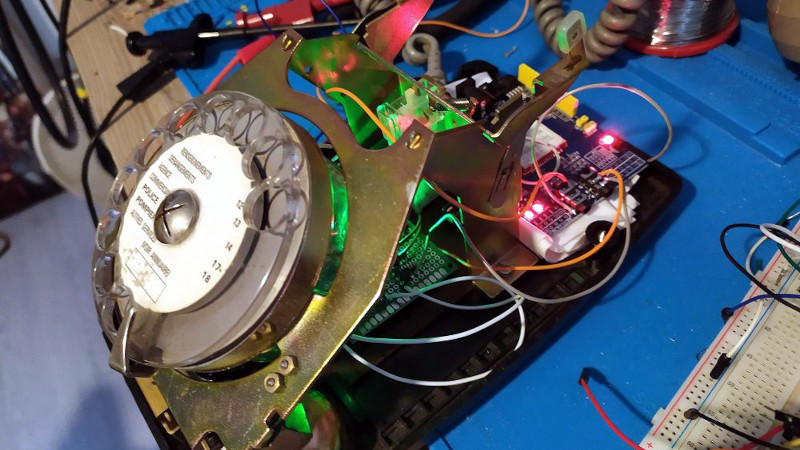One of the useful side effects of the ubiquitous availability of cellular network data modules is that they can be used to create custom mobile phones. It’s surprising in a way that we don’t see as many of these projects as we’d expect, but by way of redressing that deficiency we’re pleased to see the work of [Proton Gamer], who has taken a vintage rotary dial phone and upgraded it with an Arduino and GSM shield to make a very unexpected mobile phone project.
It’s not entirely certain from the write-up which manufacturer produced the donor phone or for which country’s network it was produced, but it seems typical of the type you might have found the world over in the 1960s. We’re given a breakdown of the various components and how to interface to them, the ringer for example is run using a motor driver board. There are comprehensive instructions for the conversion, though sadly they involve gutting the phone and removing the original hardware. The result can be seen in the video below the break, and the finished project makes a mobile phone call from the unlikeliest of hardware.
This certainly isn’t the first rotary dial mobile phone we’ve featured, including one based on a conference badge.
















The label on the dial shows it is a french phone, so made by the national telecom authority (called P&T, PTT or France Telecom depending on the year). At the time you couldn’t buy a phone at any shop, I believe you rented the phone since most of them have “property of PTT” stamped on the bottom plate. A good way to make sure that all equipment on the network is compliant so you can minimize the service and troubleshooting I guess (and these phones were extremely reliable).
The label has the old emergency / important phone numbers on it:
Phonebook info: 12
Tech support : 13
Sales office: 14
Police: 17
Fire dept.: 18
The last two are still in use today along the more recent EU-wide “112” emergency number.
Don’t forget to print a new label when the numbers change…
https://www.youtube.com/watch?v=HWc3WY3fuZU
An interesting project, “A” for effort. Too bad the creator didn’t keep more of the original internals and converted “clicks” to “touch tone” in real-time (unheard in the receiver). In the old days, in the USA, you would have raised the receiver, then dialed each digit hearing the clicks as the dialer returned to rest. Then there would have been a pause, then the ring signal feedback from the phone company as the dialed party was contacted. I believe there are still ICs that do clicks to DTMF.
Sparkfun did this 15 years ago. https://www.sparkfun.com/tutorials/51
If you need to decode rotary dials on uC: https://github.com/Harvie/RotaryDial/
Gen-X’er here, hated rotary phones back in the day.
I was glad when we as a family, got our first Touch-tone phone.